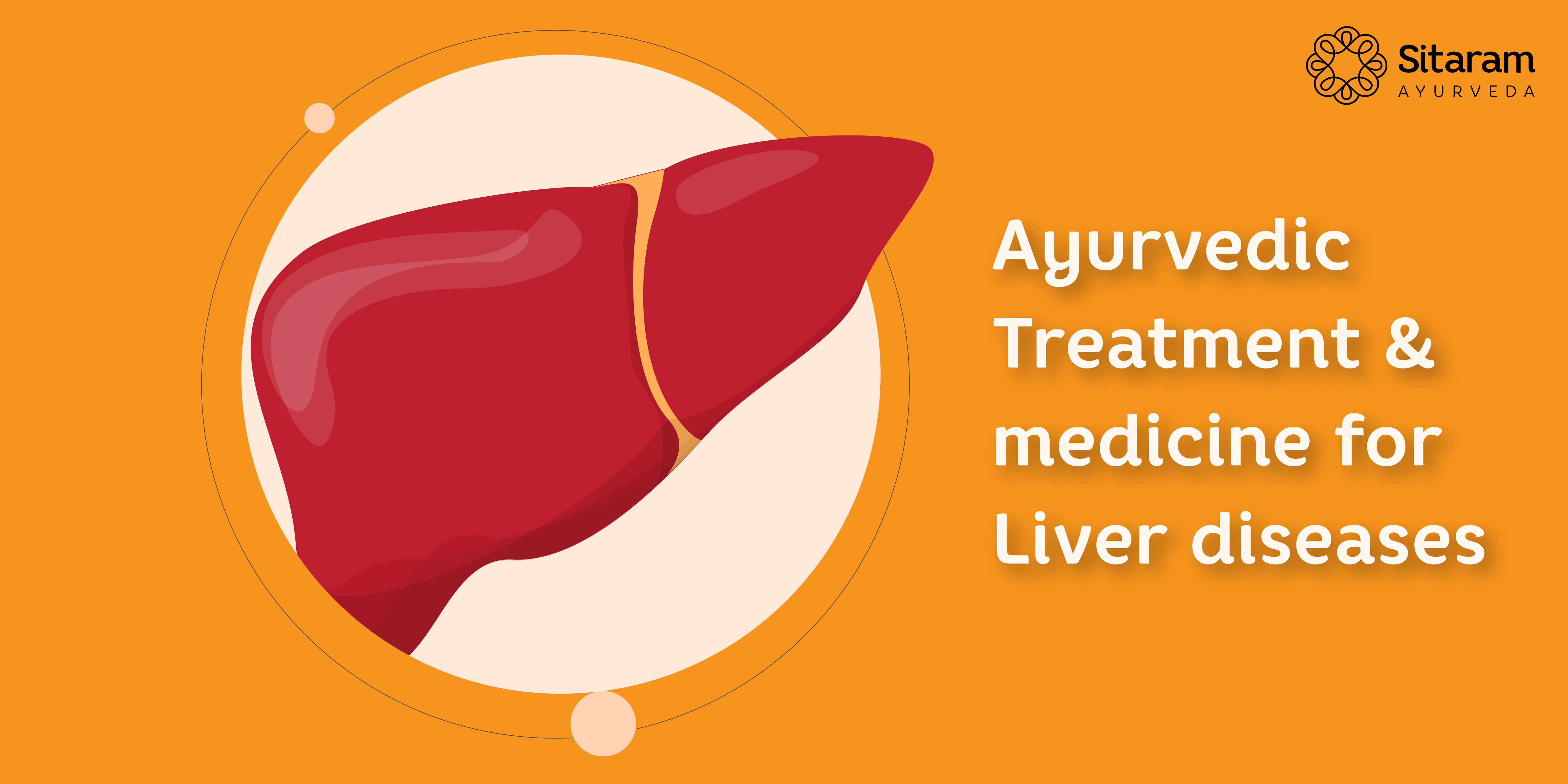Ayurvedic Treatment and Medicine for Liver Diseases

Taking Ayurvedic treatment for the liver is like cleaning the filter of your automobile. Its a must for better performance. Let us explain why.
Liver is a massive organ by function. In combination with other organs and by itself, the liver facilitates about 500 key physiological functions in the human body. (1)
Why is the liver so important?
The liver is central in metabolism of carbohydrates, lipids and protein. By performing functions like breaking down and producing glucose, making proteins like albumin form dietary amino acids, synthesising cholesterol and triglycerides, the liver regulates the response of our body to eating and starvation.
Storage of vitamins, synthesising essential chemicals like clotting factors are also done in the liver. Lymph – a circulating fluid in the body which is essential for immune functions and transport of nutrients and waste – is produced mostly in the liver.
Another important function is regulation of immunity. Liver contains cells like Kupfer cells, T and B lymphocytes and Killer cells, all of which are important in acting against invading microorganisms. Liver also filters out microorganisms in the gut from entering into the circulation. (2)
Liver is also the detoxifier of the body. It neutralises or breaks up many unwanted chemicals. It not only includes chemicals from outside from caffeine to alcohol and drugs but also the inflammatory chemicals produced in the body, like histamine.
Now that we understand the major functions of the liver, you might get the sense of the first sentence. Liver is the workhorse of the body as well as an important filter and detoxifier which protects it.
This wide association with all body systems and the action as a filter makes the liver prone to infections, inflammation and damage, more than other organs.
What are the common liver problems?
Inflammation of the liver cells – called Hepatitis can be caused by viruses, bacteria, or autoimmune mechanism.
More common are alcoholic or non alcoholic fatty liver which can progress to hepatitis, fibrosis or even cirrhosis.
Fatty liver changes, be it alcoholic or non alcoholic, are caused by our lifestyle and food habits which leads to excess free fatty acid deposit in the liver. That means they can be prevented. But what is alarming is that the incidence of fatty liver is increasing in people who are not obese or alcoholic. This is owing to their diet containing excess carbohydrates, fats, sugar, preservatives and colouring agents. Also a stressful lifestyle with less sleep adds to the prognosis by producing more inflammatory chemicals.
Ayurveda and Liver:
For liver care, Ayurveda has two important contributions to make. One is treating liver diseases like hepatitis, steatohepatitis and fibrosis. Even you can reverse liver cirrhosis naturally with the help of expert ayurvedic medical professionals.
The next is the protective and preventive aspect – preventing fatty liver changes, reversing the first grades of fatty liver and preventing non infective hepatitis are the areas where ayurveda can significantly help you.
Ayurveda understands ‘yakrit’ (liver) as one of the veal organs and defines it as the root of ‘rasa vaha srothas’ (nutritional channel). Liver and bile is considered to be strongly linked to the ‘pitha’ dosha.
Balancing ‘pitha’ dosha is important to protect the liver. It is particularly important if you had an attack of hepatitis or have fatty liver changes.
3 most important steps to solving fatty liver:
1) Food for liver health:
Avoid excessive spicy, fermented, sour and fried food, especially in hotter months. Also eating in time should not be neglected. Alcohol, smoking, refined flour, fast food, food colours and preservatives should be avoided. Keep sugar to the bare minimum.
Herbs like coriander, ajwain, cumin, mint and turmeric etc are known to help with balancing pitha.
Some food items which strengthen the liver include crucifers and greens like kale, cabbage, spinach, beetroot, berries etc.
2) Lifestyle to protect your liver:
Controlling your anger helps to keep the pitha in check. Anger, anxiety and stress produce inflammatory chemicals which can harm the liver.
A regular sleep, work and rest cycle is also important for the same reason.
3) Ayurvedic treatment for liver:
Panchakarma cleaning, especially virechana is instrumental in treating and supporting the liver as it deals with ‘pitha’ directly and also detoxifies the body.
Also, Kerala Ayurvedic medicine practitioners prescribe internal medicines for the liver according to the state of the liver and other symptoms if any.
Herbs which are used for ayurveda liver treatment includes gulchi (Tinospora cordifolia), karela (Momordica charantia), vasaka (Justicia adhatoda), draksha (grapes), pippali (piper longum), Madhuka (Madhuca longifolia) Turmeric (curcuma longa), Ginger etc.
Most of the best ayurvedic medicine for liver problems contain a combination of these herbs. Most commonly used kerala ayurvedic medicines include Guluchyadi kashayam, Drakshadi kashayam, Avipathy choornam, Vasaguluchyadi kashayam, hepamruth syrup etc. Some ayurveda medicine for digestion AP has tablets, Hinguvachadi choornam etc are also used for treating liver, according to the condition.
Our clinical experience in treating liver conditions have shown promising results like reversal of fatty liver changes and curing hepatitis. Feel free to comment below if you have any quires regarding liver health.
References:
- Hepatology: A Textbook of Liver Disease (4th ed.) Zakim, David; Boyer, Thomas D. (2002).
- Davidson’s principles and practice of medicine (22nd Ed).


 Sign In
Sign In Cart
Cart
Hi
For an online consultation, please visit :
https://bit.ly/3vy1F4d
Our doctors would be happy to assist you better.
Is it possible to treat and reverse /cure end stage Liver Cirrhosis- NAFLD at your Ayurveda hospital at Thrissur .
Patient : MELD score =21.Female, 83 yrs based in Thrissur dist
Look forward to your response
Hi
For an online consultation, please visit :
https://bit.ly/3vy1F4d
Our doctors would be happy to assist you better.
Address : https://g.page/SitaramAyurveda?share
Sitarma Ayurveda Hospital Thrissur Contact number : +91 95678 88035
Whatsapp : https://wa.me/919567888035